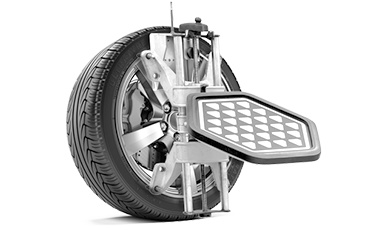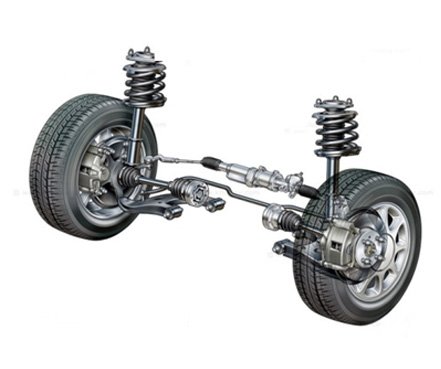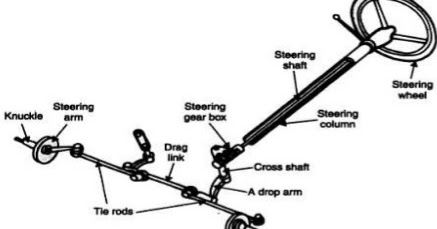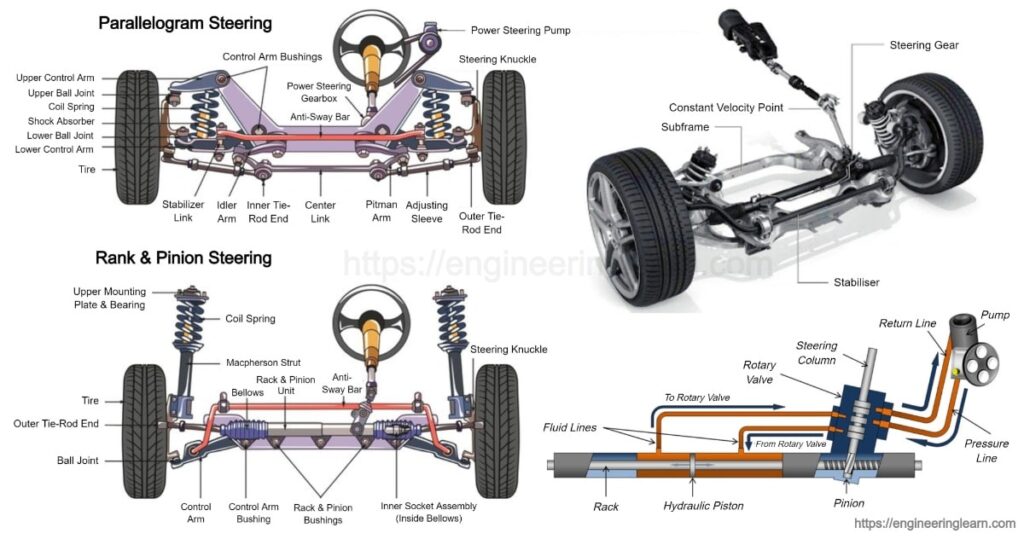
Suspension & Steering
Steering and Suspension: Partners that Work Together
When you drive a car, it’s always a good idea to make sure that your tires are still in contact with the road beneath you. It’s also a good idea to have some control over the direction you’re going. That’s why the steering and suspension system of your car is so important. Modern steering and suspension systems are controlled by a network of computers that communicate road conditions and other pertinent information to the various working parts. The force on your car from hitting a nasty pothole can be more than several tons, which can do a lot of damage. The components of the steering and suspension system of an automobile work together to keep the car in one piece and give you a relatively smooth ride despite what may be below.
Types of Steering Systems
Steering systems provide a way for a vehicle to be guided in a specific direction without the driver having to exert excessive effort. If you’ve ever driven a car whose steering system isn’t working well, you may remember how you could barely turn the steering wheel. In an optimally functioning vehicle, it’s easy to turn the wheel in the direction you want to go. The two most common types of steering systems are the rack and pinion system and the conventional, or linkage, system.

Rack and Pinion
Rack and pinion steering involves, you guessed it, a rack and a pinion. A rack is a linear gear that moves when the pinion, a circular gear, rotates and causes the rack to move. This pinion is attached to the steering shaft and begins its rotation when the driver is turning the steering wheel. The rack then causes the car’s wheel on the road to turn because it is connected to a tie rod that is connected to the wheel.
Conventional or Linkage
Conventional steering, which is also more popularly known as either linkage or worm gear steering, involves a worm gear that is attached to the end of the steering shaft. This worm gear is turned when the driver turns the steering shaft, and it connects with a sector gear that rotates as its teeth move along the worm gear. This action moves a Pitman arm, which moves in an arc-like motion and acts on linkages that move the wheels.


Steering System Components and Operation
Regardless of the type of steering system a car has, the basic components of the system are the same. These components include:
- Steering Gear – The steering gear is the main gear affected by the steering shaft’s action to create circular motion that is ultimately transferred to the wheels.
- Steering Linkage – This linkage is the connection point between the suspension system and the steering system. It takes the action of the steering wheel down to the wheels themselves to turn them.
- Steering Column – The steering column contains the steering shaft, which rotates and transfers the motion to the steering box with its gears.
- Steering Wheel – The steering wheel is what the driver turns to steer the car. It also houses the windshield wiper switch, the traffic indicator switch, the light switch, and a few other components.
Suspension System Components and Operation
There are several types of suspension systems in modern cars, but the most common one is the MacPherson Strut system, so we’ll focus on describing its components and operation. The MacPherson Strut system is an independent suspension system, which means that each wheel in it is independently supported. Macpherson struts are found in the front of the car, one on each side of the vehicle. Occasionally, they’re also found in the rear.
Dampers and Springs
Inside the MacPherson Strut are found coil springs that absorb the shocks and impacts of the road, allowing the wheels to move up and down. Within each spring is a damper, or shock absorber, that absorbs the energy stored in the spring so that the amount of oscillation of the spring is controlled.